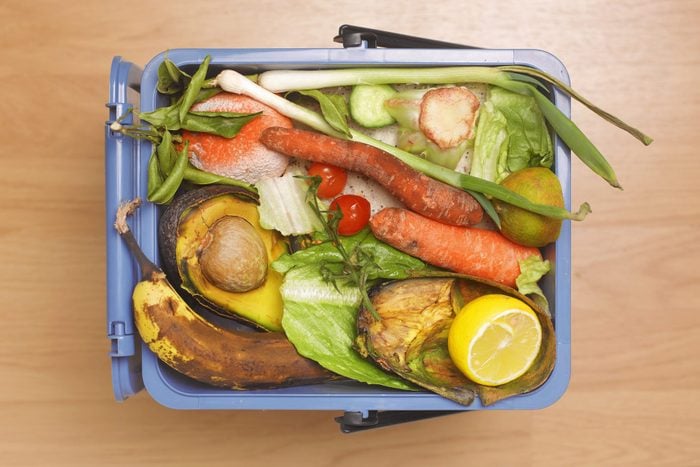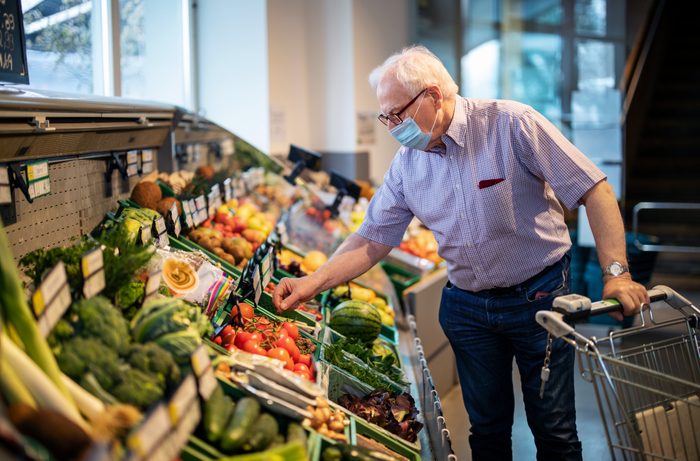
Shop Smart
Most Americans do one big shopping trip a week, stocking up on everything from pantry staples to perishables like dairy and produce. If you struggle to eat foods before they go bad, consider adding a quick grocery shop midweek to pick up meat and produce to carry you through the rest of the week and weekend.
If gas prices are an issue or your store is particularly far away, consider setting up a carpool system with a friend or family member. Find more smart grocery shopping tips.

Start Meal Planning
We love meal planning on the weekend: it makes grocery shopping simpler and prevents you from standing in front of the fridge and wondering what to cook at 5:00 p.m. It can also help you plan out your list so you don’t end up buying items in the store that you don’t need.
The trick? Not biting off more than you can chew. It’s easy to imagine that you’ll want to cook a big meal every night, but with hectic schedules this isn’t always realistic. Build in nights off so you’re not buying food you can’t cook. And if some nights don’t work out as planned, don’t panic! Embrace no-recipe cooking so that you can rally if ingredients go bad, you’ve forgotten to buy something or just don’t have time for an elaborate meal.
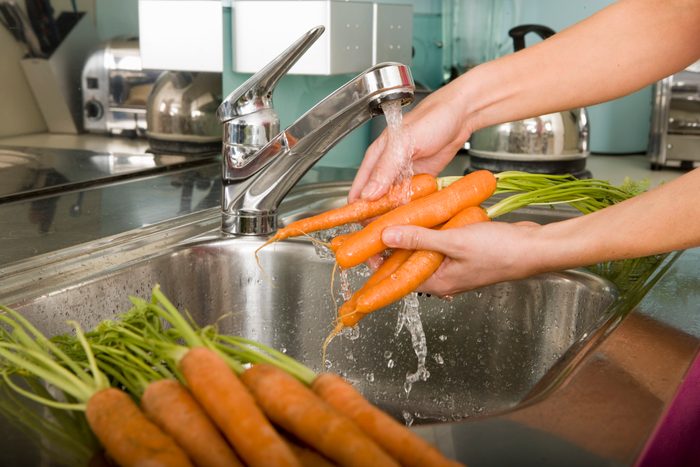
Wash and Prep Fresh Food ASAP
Did you stock up on fresh fruits and veggies at the farmers market? Do yourself a favor and take the time to wash and prep your produce as soon as possible after buying them. You’ll be more likely to eat them up when they’re so easy to toss into a skillet or into a salad. The exception: the right way to wash berries is right before eating.
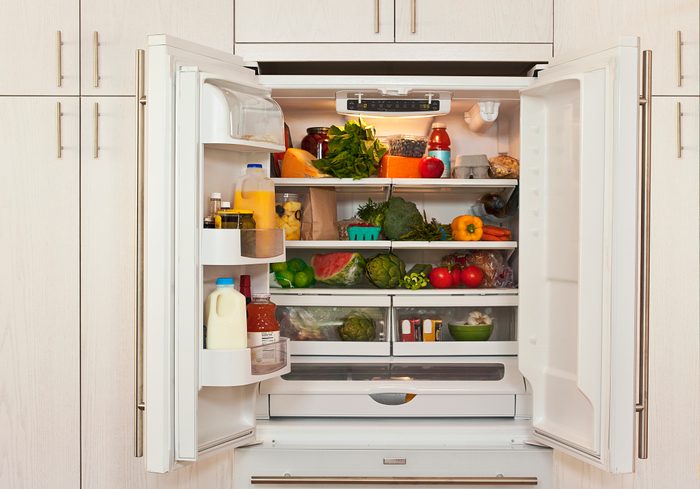
Organize Your Fridge
It’s easy to lose track of food in a cluttered and overcrowded refrigerator. We’ve all unearthed an ancient bag of carrots or cream gone fuzzy at the back of the shelf. Follow these fridge organization tips, from decluttering to keeping perishables toward the front. And, if you’re on a budget, we’ve got you covered for that, too.
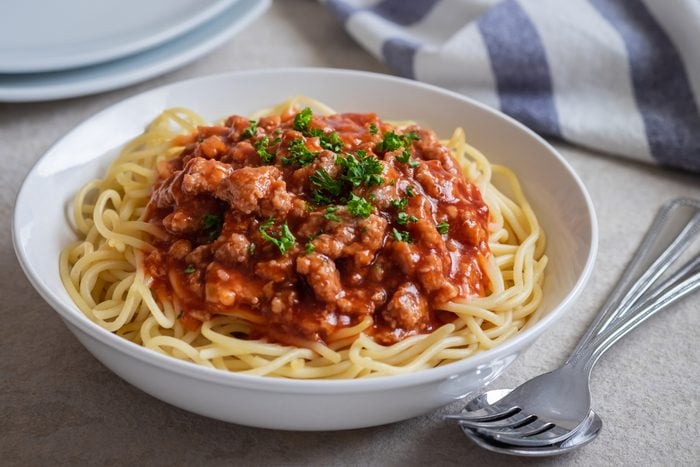
Reimagine Leftovers
Leftovers night doesn’t have to be a dismal affair. If your family balks at eating the same reheated stew day after day, consider reinventing leftovers. Shred leftover meat and turn it into a pasta sauce, combine leftover vegetables into a frittata or make a stir-fry or fried rice using yesterday’s rice. You can also pickle them, turn them into a casserole or blitz them into a quick dip or soup to save time. Leftover breads of all kinds make great croutons or crunchy add-ons to soups! Find more ways to repurpose leftovers.
If you’d prefer to simply never have any leftovers, you can also cook in smaller portions. Try individual ramekins for desserts or small skillets to cook omelets.
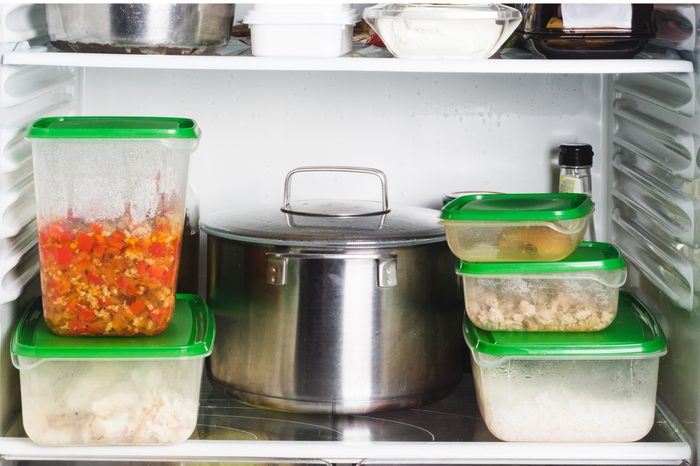
Have a Weekly Clean-out Meal
Another creative way to clear out leftovers is to have a clean-out night. Find out how long food lasts in the fridge so you can use it up before it goes bad. Set out food that needs eating up (think cooked beans or meat) along with chopped vegetables (like carrots and celery), plus some fun fillers (think nuts, cheese, avocado and pickles). A buffet-style setup turns dinner into a casual bistro-style event that’s a breeze for cooks.
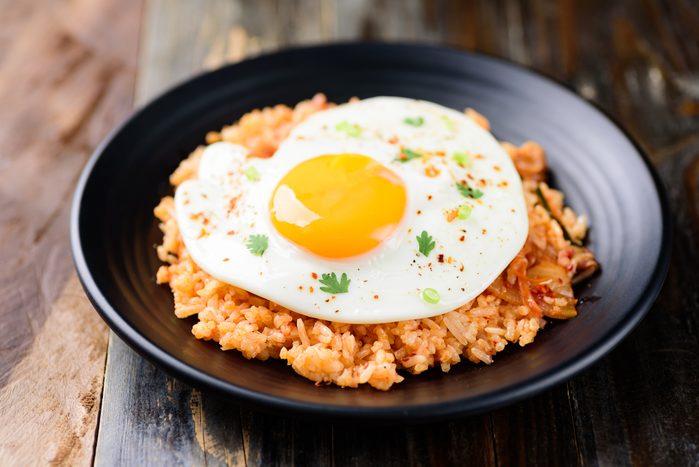
Put an Egg on Top
Sometimes, you can save food simply by cooking a smaller meal. A brilliant trick for stretching a small meal? Add an egg. Follow our guide for how to cook an egg every which way. Then turn a salad into dinner by adding sliced hard-boiled eggs. Cooked veggies tucked into an omelet makes a hearty dinner in a flash. A dish of leftovers that wasn’t quite enough for a full meal suddenly becomes filling with the addition of a fried egg. It also adds a dose of cheap protein that won’t break the bank.

Use Scraps and Peels
There’s some food waste you didn’t even realize you could eat or use! Don’t just toss peels, cores and scraps. If they haven’t gone bad, they’re perfectly edible! Just about any vegetable and meat scrap can be used up in a homemade broth. Even rough skins like butternut squash and papery skins of garlic and onion lend plenty of flavor to a broth, which can go into any soup, stew or just a cozy mug when you’re under the weather.
The stems of greens like chard or kale, carrot leaves, tough leaves and ragged herbs can also be made edible. Turn these tough greens into a tasty sauce or cook rough foods like kale stems in oil until they’re soft, and then blend them with softer stems and greens, garlic, spices and olive oil to make a casual version of pesto. This is also a more affordable option that buying basil or jarred pesto.
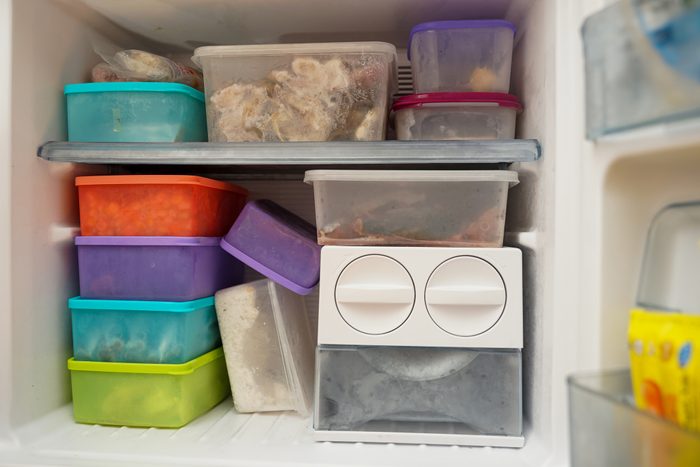
Freeze, Freeze, Freeze
The secret weapon against food waste: the freezer. So many foods freeze well. Bought meat you can’t use in a couple of days? Put it in the freezer. Did you cook a big pot of soup? Freeze half of it. Stocked up on milk on sale? Freeze it. Deli meat, eggs, cheese, bread—freeze them. Here’s our complete guide on how to freeze food.
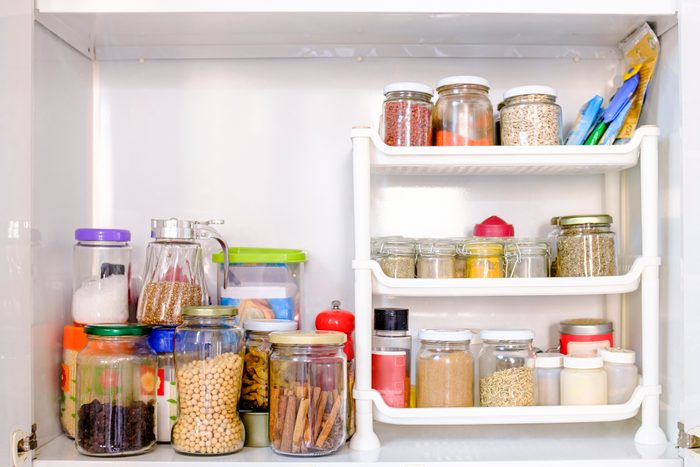
Make Your Pantry Work for You
Reduce your reliance on fresh, perishable foods by keeping a well-stocked pantry. Staples like pasta, grains and frozen vegetables can supplement a small meal and can bulk out a meal while keeping things affordable.
Oh, and keep an eye on expiration dates. Put newly bought food in the back of the pantry and eat the older food first. If food is hovering just past its expiration date, consider eating it. Here’s what expiration dates really mean.
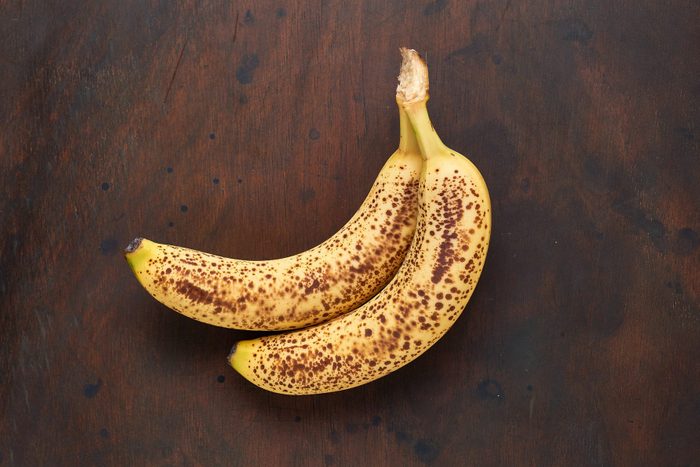
Take Note of What You Do Toss—and Learn to Avoid It
When you do have to ditch food, take a mental note about what happened. Did you lose the food in the fridge? Did you over-shop? Was it a food that your family just doesn’t like? Learn from your mistakes and save money in the process.

